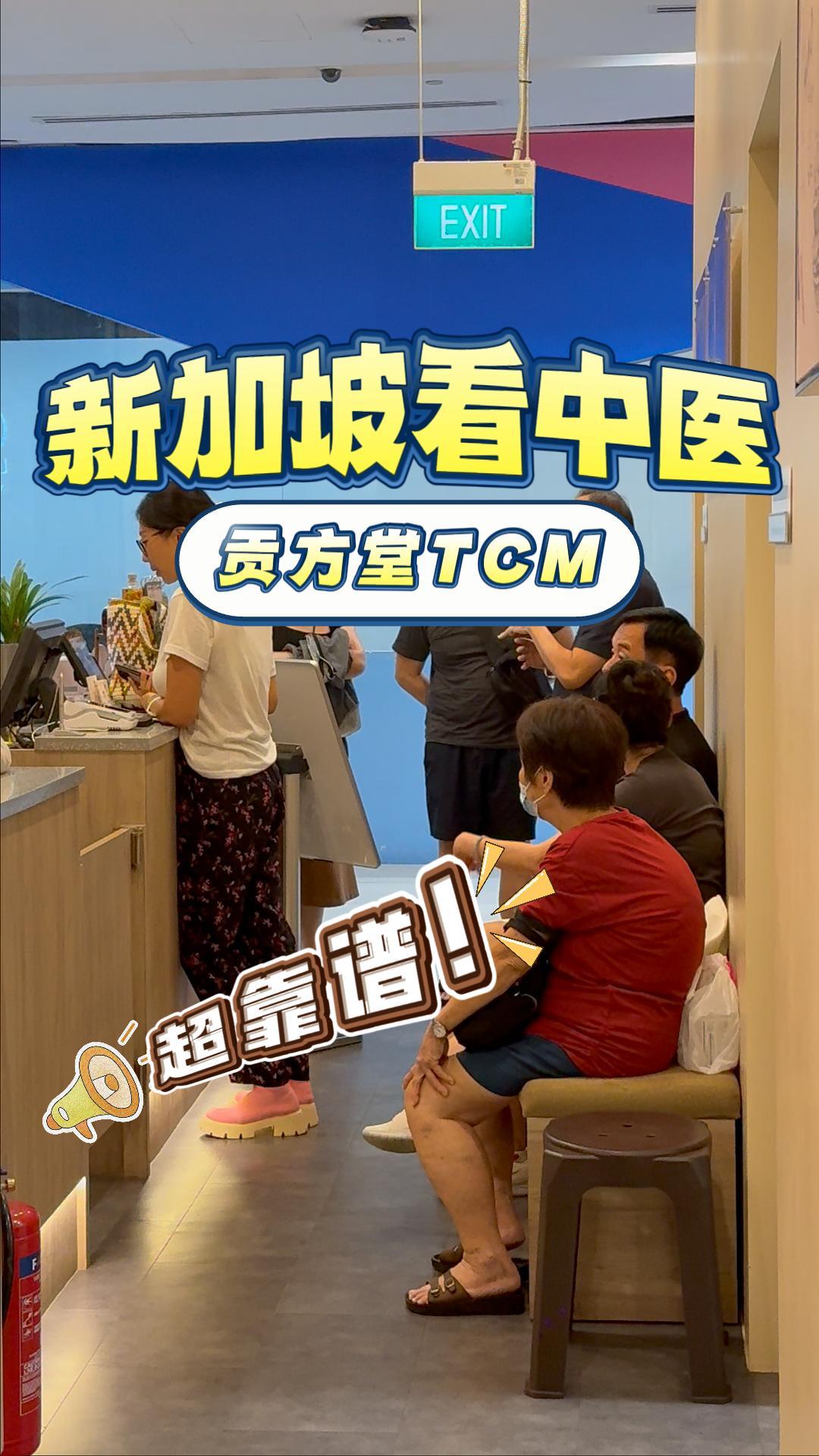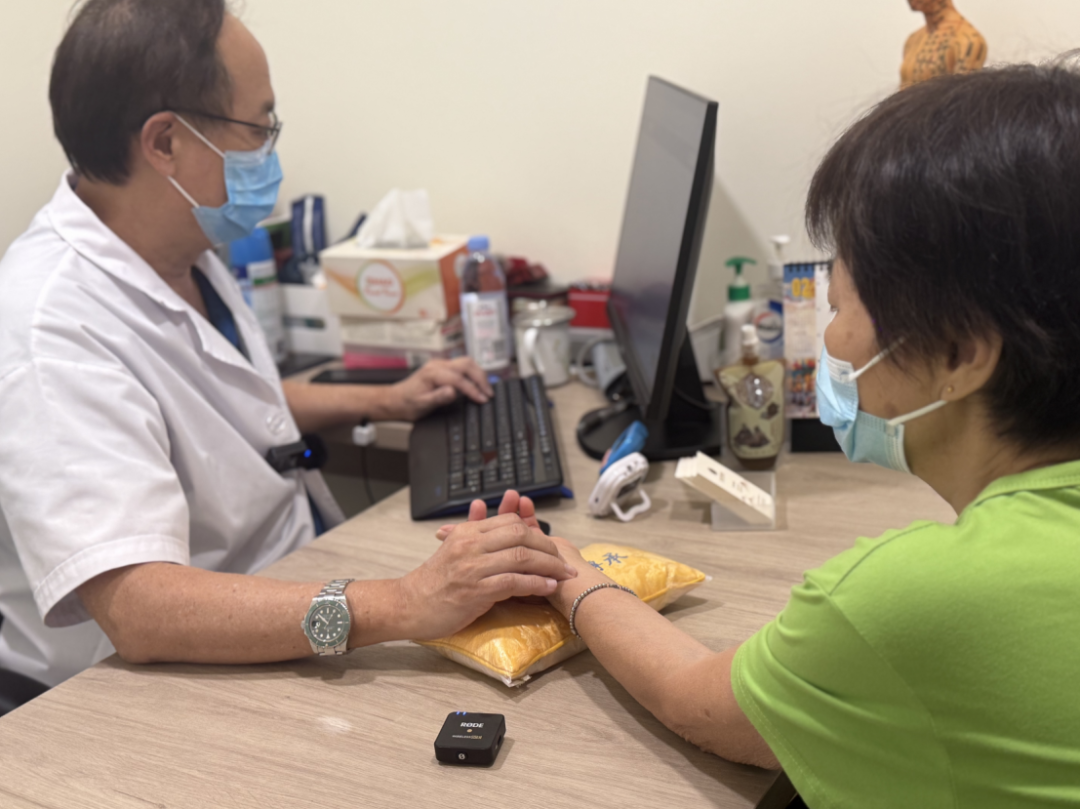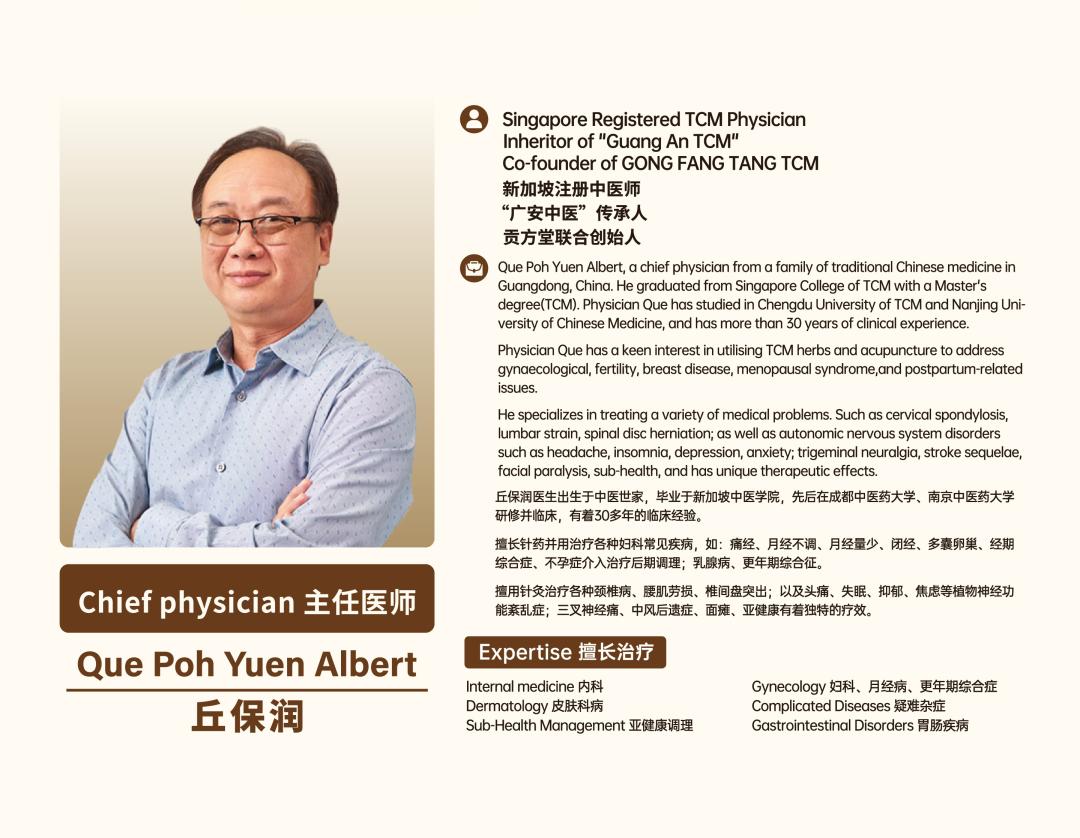- Physicians
- Clinics
- TCM
- Western GP
-
Fees
-
Deals & Privileges
- About & Resources
- Contact Us
Rosacea, a name that sounds romantic, is actually a common chronic inflammatory skin condition primarily affecting the central face—especially the nose, cheeks, and chin. Many patients dread hearing this diagnosis.
Can rosacea be completely cured? How long does it take to restore normal skin?

Rosacea presents with diverse symptoms and is mainly classified into 4 types, each with distinct manifestations and treatment approaches:
Erythematotelangiectatic Rosacea (most common type):
Persistent facial redness and visible blood vessels
Patients often experience prolonged facial warmth and discomfort
Papulopustular Rosacea:
Redness accompanied by inflammatory bumps and pus-filled lesions
Requires more aggressive treatment due to noticeable symptoms
Phymatous Rosacea (rare, predominantly affects men):
Thickened skin and nasal deformity (rhinophyma)
May require laser therapy or surgical intervention
Ocular Rosacea:
Eyelid swelling, conjunctivitis, dryness, and itching
Requires special attention as it may impair vision
Dr. Que Poh Yuen Albert, TCM Dermatology Specialist at Singapore's Gong Fang Tang, notes that rosacea primarily affects the central face. Beyond skin damage, patients often suffer psychological distress—experiencing anxiety, embarrassment, and fear of social judgment due to visible changes.
Lung-Stomach Heat Excess Pattern (common in erythematous type):
Redness concentrated on nose tip/wings (blanches under pressure)
Accompanied by alcohol sensitivity, dry mouth, constipation
Heat-Toxin Accumulation Pattern (common in papulopustular type):
Acne-like bumps/pustules over red patches with prominent capillaries
Local burning sensation, dry mouth, constipation
Qi Stagnation & Blood Stasis Pattern (common in phymatous type):
Nodular nasal tissue growth with enlarged pores

In Traditional Chinese Medicine (TCM), different herbal formulas are prescribed based on the specific pattern differentiation for rosacea treatment.
Lung-Stomach Heat Excess Pattern
Formula: Modified Pi Pa Qing Fei Yin (Loquat Leaf Lung-Clearing Decoction)
Action: Clears heat from the lungs and stomach, reducing facial redness and papules.
Liver Qi Stagnation Pattern
Formula: Modified Dan Zhi Xiao Yao San (Moutan & Gardenia Free and Easy Powder)
Action: Relieves liver stagnation, regulates Qi and blood, and alleviates symptoms.
Damp-Heat Accumulation Pattern
Formula: Modified Yin Chen Hao Tang (Artemisia Scoparia Decoction) combined with Huang Lian Jie Du Tang (Coptis Toxin-Resolving Decoction)
Action: Eliminates dampness and heat, reducing skin inflammation.
For patients with redness and swelling, a herbal compress can be made by decocting:
Purslane (Ma Chi Xian) – Clears heat, detoxifies, cools blood, and stops bleeding.
Phellodendron Bark (Huang Bai) – Clears heat, dries dampness, removes toxins, and reduces bone-steaming fever.
Sophora Root (Ku Shen) – Clears heat, dries dampness, kills parasites, and promotes urination.
Combined Effect: These herbs effectively reduce skin inflammation and relieve swelling.
Compared to Western topical medications, TCM external treatments have fewer side effects, lower irritation, and are more suitable for long-term use.

Patient: Female, 51 years old
Chief Complaint: Facial skin burning sensation, itching, and stinging pain persisting for over 1 month.
Present Illness: The patient experienced facial burning, itching, and stinging pain for more than a month. She was diagnosed with "Erythematous Rosacea" at a local hospital and prescribed Mupirocin Ointment (Bactroban) and Urea Cream, but with little improvement, leading her to seek further treatment.
Current Symptoms:
Intermittent facial redness with intense burning (often needing to fan herself for relief)
Occasional itching and stinging, mainly around the nose and cheeks
Symptoms worsen with heat and improve with cold exposure
Dry and bitter mouth
Epigastric discomfort, acid reflux, heartburn, belching
Night sweats and hot flashes
Constipation (bowel movements every 2-3 days)
Tongue: Red with yellow, greasy coating
Pulse: Wiry (弦, Xian)
Prescription:
Bupleurum (Chai Hu) 10g
Scutellaria (Huang Qin) 10g
Pinellia (Ban Xia, processed) 9g
Inula Flower (Xuan Fu Hua) 10g
Calcined Hematite (Dai Zhe Shi) 15g
Codonopsis (Dang Shen) 15g
Calcined Oyster Shell (Duan Wa Leng Zi) 15g
Bitter Orange (Zhi Shi, bran-fried) 10g
Evodia (Wu Zhu Yu, processed) 3g
Coptis (Huang Lian) 5g
Rhubarb (Da Huang, wine-processed) 10g
Moutan Bark (Mu Dan Pi) 15g
Red Peony (Chi Shao) 15g
Kochia Seed (Di Fu Zi) 15g
Dictamnus Root (Bai Xian Pi) 12g
Honey-fried Licorice (Zhi Gan Cao) 6g
Dosage: 5 doses, decocted in water, 1 dose per day.
Outcome:
After taking 3 doses, the patient reported significant relief in facial burning—no longer needing to fan herself—along with reduced itching and stinging. Bowel movements normalized to once daily. Given the efficacy, the same prescription was continued for 5 more doses.
